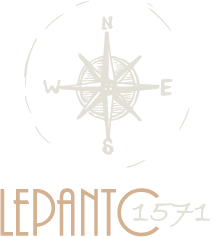Frankish period - The Angevins dynasty
After the end of the 4th Crusade and the Latin conquest of Constantinople (1204), Naupaktos passed briefly under the control of the Venetians. In the Venetian documents of the time it is mentioned as Nepanto or Lepanto for the first time. With a treaty of 1210 it was ceded to Michael I Angelos Doukas Komnenos and was annexed to the Despotate of Epiros until 1294. In that year the city was offered as dowry by Nicephoros I Komnenos Doukas to Philip I of Tarentum, who married the former's daughter, Thamar. With this wedding the city in fact came under the control of the Angevin branch of Sicily, who preyed upon the entire Epiros region, yet managed to control only Aetoloakarnania. Philip restored the fortifications of the city and minted a coin according to western standards. It seems that he respected the initial agreement that the Orthodox Christians would freely exercise their faith, although after 1320 a Catholic bishopric was founded in Naupaktos as well. The turbulent period after 1320 affected Naupaktos, which, however, did not change hands like the rest of Aetoloakarnania. The civil war between Andronikos II and Andronikos III Palaeologians, however, for the fate of the Despotate of Epiros on the one hand and the military campaign of Walter de Vrienne against the Catalans on the other hand created an ambiance of insecurity and, gradually, a vacuum of power. Thus, after the death of Andronikos III Palaeologos, Albanians, supported by the Serbian Stephan Dushan, raided the Greek lands and managed to reach Naupaktos in 1358. They established their power in the region until 1407, when the city came under Venetian control.The century of Venetian presence
The period of the Venetian occupation of Naupaktos lasted for about a century. During this century the city was further fortified and took, more or less, its present form. The fortress and the port, although pre-existing, were reconstructed and became clearly Venetian from the architectural point of view. On the social and political level, however, the Venetians were known as oppressive masters, restricting the religious liberties of the population and imposing heavy taxation. It is perhaps for this reason that several monasteries in high mountainous regions around Naupaktos seem to have been founded in that period, as people fled the city for the countryside. Furthermore, throughout the 15th century the Venetians engaged in repeated wars with the rising power of the Ottomans. The strength of the fortifications proved itself in several occasions during Ottoman attacks, namely in 1463, 1477 and 1499.


